Many cultures have put considerable effort into beautifying the arts of war, but in the Islamic world there is a spiritual dimension as well. Religious inscriptions abound. While Japanese and European armourers were also adept at making a dramatic impression, their Muslim counterparts used the written word to unparalleled effect. In addition to sophisticated acid-etching techniques and inlays in precious metals, the superb quality of steel with a high-carbon blend was allowed to shine through. Collected for centuries as weapons, and much respected by their opponents in warfare, these objects stand out as works with a sculptural quality. Whether used for practical or ceremonial purposes, they are an enduring reminder of the armourer’s advanced sense of aesthetics and commitment to his craft.

As with the rest of the world, there are two major categories of Islamic arms: firearms and edged weapons. Blades have, of course, a much longer history than barrels. The greatest advance in metalworking was the development of watered steel, associated with Damascus and used throughout the Islamic world. Flexible and yet able to take the sharpest edge, it was ideal for the highest-quality swords, daggers, axes, maces and spears. There is a wide variety of regional weapon types. The most easily recognisable of these are short, curved daggers and long, curved scimitars.
With the arrival of firearms, aesthetics remained a priority and the imagination of the Islamic gunsmith soared. Rifles and pistols were ornamented in spectacular fashion. Typical decoration would include inlays of gold, silver, ivory or mother-of-pearl on the lock, stock and barrel. Similar attention was given to the accessories that accompanied these weapons. In an age of complicated black-powder weaponry, it was essential to have powder horns, primers and strikers. The firing mechanism was usually based on 17th century matchlock prototypes, which remained in use as late as the 20th century.

Islamic armour has always been noted for its lightness and flexibility. The most typical example is chain mail, often combined with steel plates. Equally characteristic are the pointed helmets that were so widely used in Iran and India. Inspiring fear, as well as admiration, was the objective. Helmets which incorporated horns or the faces of ferocious animals must have made the right impression, and horses were also equipped with awe-inspiring headgear. Islamic warriors favoured armour that matched their weapons for decorative effect. This might feature gilding, inlay, damascening or being set with gems.

Armies, as well as individuals, had their own accoutrements. Military standards have a universal value, although in the Islamic world they were usually made from metal rather than cloth. Steel ‘alam were used in most of Islam’s empires. They tend not to be as elaborately ornamented as weapons and armour, although they usually included inscriptions from the Qur’an and details of the ruler to whom they belonged. Each of these groups of objects was often signed by their maker, which puts them in an important and fairly exclusive category of Islamic art works.














